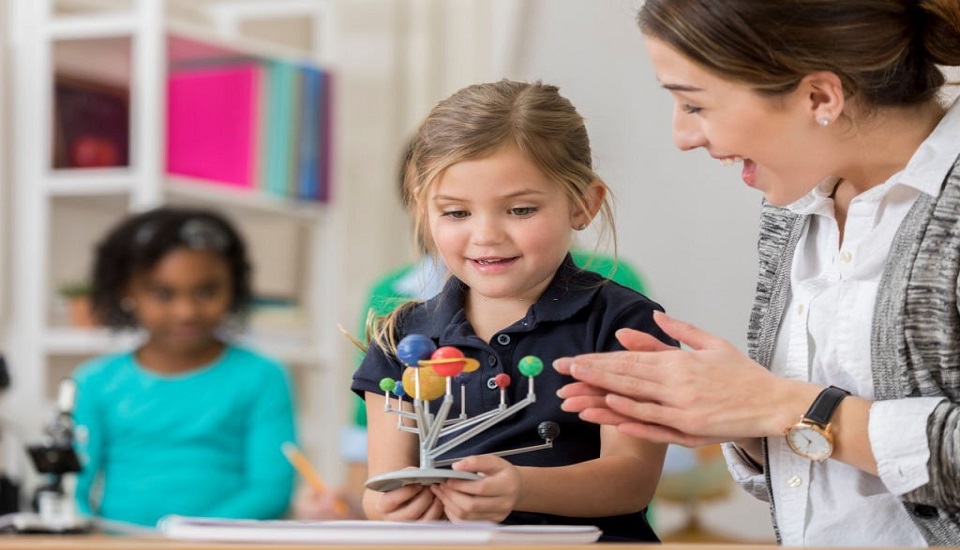How To Help Preschoolers With Separation Anxiety?
16th February 2022

For preschoolers, separation anxiety is a normal part of their development process. While the range of difficulty varies in children, nevertheless it is pretty common. So, if you are a preschool teacher or parents preparing your child for transition, it is important to know about separation anxiety. When the right strategies and approaches can be applied both parents, as well as teachers, can achieve relatively stress-free drop offs to the school.
While this is a challenging phase for children and parents to transition through, as teachers it also becomes your responsibility to ensure every child you are caring for feels safe around you and comfortable to be in the classroom. This separation is even more difficult when a child experiences separation anxiety disorder If you work together with the child’s parents, however, you can quickly establish a secure routine for drop off that works for everyone.
What is separation anxiety disorder?
Naturally, it is 'Normal' for young children to feel anxious when they say goodbye to their primary caregiver. Children of age 6 months to 3 years most commonly display a reaction of separation anxiety. Children of early age express their emotions through crying, tantrums, or clinginess.
Although these are healthy reactions to separation and are normal stages of their development, however, when their situation does not improve over time, even with a parent’s best efforts, they may need special attention.
Though the symptoms of separation anxiety and separation anxiety disorder often time seem too similar, the major differences between them lie in the intensity of the child’s fears, and whether these fears are blocking them from normal activities. Learners with a separation anxiety disorder may become agitated with just the thought of being away from their parents, in most cases mothers, and may even complain of sickness to avoid playing with friends or going to school.
3 Tips For Parents To Help Toddler Transition Through Separation Anxiety Period –
1. Prepare your child mentally
Transitions are never meant to be easy for anyone when it comes to children it is the same thing. Instead of suddenly dropping your child to drop school one day, start working on their separation time ahead of time.
Use small situations where your child can be away from you in good hands. Also preparing them for what's coming next is a useful idea. You can tell them how your child will be going to school and have them practice some activities such as walking in the doors to hang their bag and then saying goodbye while leaving.
2. Introduce new caregiver/teacher gradually
It is a good idea to go and let the child see the place you will be going to. This helps them to get familiarized with the new structure and environment. When they feel the familiarity of faces and school environment, they can be at ease to make the transition smooth. And this way, when you drop them at school it will not be a stranger situation for them to deal with anymore.
3. Say goodbyes and make it quick
Always say goodbye to your child when dropping them off at school. Often time’s parents think that if they don't inform the child about their leave it wouldn't make things difficult. But the truth is even as children, trust breaking is a thing. Disappearing without saying goodbye can even raise abandonment issues. Along with this ensure that you are making your goodbye short and sweet. When you keep these small things in mind it allows the child to trust in you that you will be back.
How teachers can help learners with separation anxiety?
• Ask parents to prepare their child ahead of time. Make it a point to inform the parents about separation anxiety and how they prepare their child slowly.
• Keep parents' background information handy. What is the child’s daily routine and what are the things that can be done to keep the feel at ease. The more you know about the child's personal needs the more you can be equipped to handle him/her.
• Ask parents to bring one or two comfort items. Comfort items can be soft toys or any familiar item that belongs to the child. This type of item can provide comfort when a child is feeling homesick.
• Incorporate engaging activities to distract the child. For instance, picture books can help to engage the child in the story as soon as parents leave.
Final Thoughts
Always bear in mind that it is completely natural for your toddler to feel anxious without you by their side. Try making this transition easy for them by attuning to their needs. And for teachers alongside Certificate in Special Education, the best way to deal with the situation of separation anxiety disorder is to ensure that you treat children by being gentle and compassionate.








